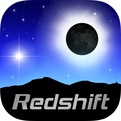An unexpected discovery
Herschel finds a hole in space
 © ESA/HOPS Consortium
|
NGC 1999 is the green tinged cloud towards the top of the image. The dark spot to the right was thought to be a cloud of dense dust and gas until Herschel looked at it. It is in fact a hole that has been blown in the side of NGC 1999 by the jets and winds of gas from the young stellar objects in this region of space. This image combines Herschel PACS 70 and 160 micron data, and 1.6 and 2.2 micron data with the NEWFIRM camera on the Kitt Peak 4 meter.
A cloud of bright reflective gas known to astronomers as NGC 1999 sits next to a black patch of sky. For most of the 20th century, such black patches have been known to be dense clouds of dust and gas that block light from passing through.
When Herschel looked in its direction to study nearby young stars, the cloud continued to look black. But wait! That should not be the case. Herschel’s infrared eyes are designed to see into such clouds. Either the cloud was immensely dense or something was wrong.
Investigating further using ground-based telescopes, astronomers found the same story however they looked: this patch looks black not because it is a dense pocket of gas but because it is truly empty. Something has blown a hole right through the cloud. “No-one has ever seen a hole like this,” says Tom Megeath, of the University of Toledo, USA. “It’s as surprising as knowing you have worms tunnelling under your lawn, but finding one morning that they have created a huge, yawning pit.”
The astronomers think that the hole must have been opened when the narrow jets of gas from some of the young stars in the region punctured the sheet of dust and gas that forms NGC 1999. The powerful radiation from a nearby mature star may also have helped to clear the hole. Whatever the precise chain of events, it could be an important glimpse into the way newborn stars disperse their birth clouds.
Source: European Space Agency (ESA)
An unexpected discovery
Herschel finds a hole in space
 © ESA/HOPS Consortium
|
NGC 1999 is the green tinged cloud towards the top of the image. The dark spot to the right was thought to be a cloud of dense dust and gas until Herschel looked at it. It is in fact a hole that has been blown in the side of NGC 1999 by the jets and winds of gas from the young stellar objects in this region of space. This image combines Herschel PACS 70 and 160 micron data, and 1.6 and 2.2 micron data with the NEWFIRM camera on the Kitt Peak 4 meter.
A cloud of bright reflective gas known to astronomers as NGC 1999 sits next to a black patch of sky. For most of the 20th century, such black patches have been known to be dense clouds of dust and gas that block light from passing through.
When Herschel looked in its direction to study nearby young stars, the cloud continued to look black. But wait! That should not be the case. Herschel’s infrared eyes are designed to see into such clouds. Either the cloud was immensely dense or something was wrong.
Investigating further using ground-based telescopes, astronomers found the same story however they looked: this patch looks black not because it is a dense pocket of gas but because it is truly empty. Something has blown a hole right through the cloud. “No-one has ever seen a hole like this,” says Tom Megeath, of the University of Toledo, USA. “It’s as surprising as knowing you have worms tunnelling under your lawn, but finding one morning that they have created a huge, yawning pit.”
The astronomers think that the hole must have been opened when the narrow jets of gas from some of the young stars in the region punctured the sheet of dust and gas that forms NGC 1999. The powerful radiation from a nearby mature star may also have helped to clear the hole. Whatever the precise chain of events, it could be an important glimpse into the way newborn stars disperse their birth clouds.
Source: European Space Agency (ESA)











